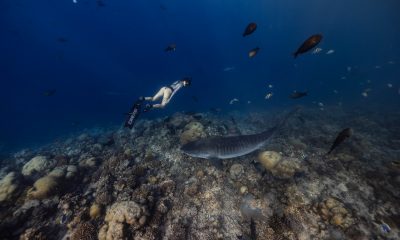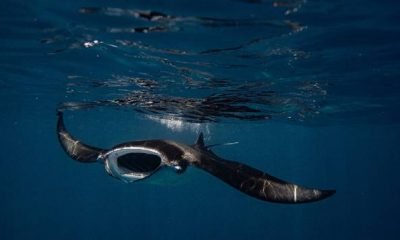Featured
Researchers in Maldives obtain first ever underwater ultrasound scans of wild reef manta rays

A team of international researchers working with Six Senses Laamu in Maldives has obtained the first ever underwater ultrasound scans of wild reef manta rays.
The team of researchers from the University of Cambridge and the Manta Trust worked together with the Maldives Underwater Initiative (MUI) at Six Senses Laamu resort in the unexplored Laamu atoll to successfully scan a pregnant wild reef manta ray underwater to obtain clear ultrasound images of her foetus, using the world’s first contactless underwater ultrasound scanner.
Two years ago, MUI brought together some of the great minds in veterinary technology and challenged them to create a device that could ultrasound scan Laamu atoll’s resident population of reef manta rays (Mobula alfredi).
“MUI aims to be a marine conservation visionary,” Marteyne van Well, the General Manager at Six Senses Laamu, was quoted in a statement issued by Six Senses, saying.
“One of the ways we’re leading conservation efforts in the Maldives is by providing a platform for discussions on, and the field testing of, this world-first technology.”
Following a visit to Six Senses Laamu, Vetsonic (UK) Ltd Founder Ray Rochester approached veterinary imaging leaders IMV Imaging with the idea of developing a scanner to meet the rigours of diving at Manta Point, a manta ray cleaning station just a 10-minute boat ride from the resort that researchers from the Manta Trust have been studying since 2014.
IMV Imaging’s Duo-Scan:Go Oceanic is the first ever technology to allow contactless scanning of wild marine animals at depths of up to 98.5 feet (30 metres), whilst also being portable (the dive rig weighs less than 4.5 pounds (2 kilograms). The aim of bringing this technology to Laamu was to scan wild pregnant reef manta rays in order to study gestation and embryonic development.
“We know very little about where these reef manta rays go to give birth and how long gestation lasts in the wild. This ultrasound technology could allow us to determine rates of reproduction in the wild and this information would help guide conservation strategies for this threatened species,” Nicole Pelletier, Manta Trust Project Manager at Six Senses Laamu, said.
The research project is taking place in Maldives, which has the largest population of reef manta rays in the world. The team hopes that their work will help establish the factors responsible for annual fluctuations in breeding and discover why animals breed in certain areas but not others.
Manta rays are close relatives of sharks and rays. The largest individuals can reach as many as seven meters in width and weigh up to two tonnes. However, despite their size, and compared to some of their close relatives, mantas are gentle creatures.
Mantas are found throughout the tropical and sub-tropical oceans of the world. The animals never stop moving, as they must keep water flowing over their gills to respire. Their daily and seasonal movements are tuned to the ebb and flow of the ocean currents that carry the planktonic food upon which they depend.
“Manta rays are one of the most beautiful and iconic creatures that swim in our oceans,” Dr Gareth Pearce, from the Department of Veterinary Medicine at the University of Cambridge, was quoted in a statement issued by Manta Trust, as saying.
“Unfortunately, like many animals, their future is threatened. They are increasingly fished, both deliberately and through bycatch and their populations are now at risk.”
In recent years, manta ray populations have become threatened through bycatch in fisheries targeting other species, such as tuna and swordfish, but also because their gill plates have recently become sought after for use in Asian medicine.
Working with the Manta Trust, Dr Pearce and PhD student Niv Froman use the new ‘Duo-Scan: Go Oceanic’ ultrasound scanner to study the reproductive ecology of manta rays. To scan the manta rays, researchers dive down to a ‘cleaning station’ where smaller fish remove parasites from the mantas’ skin. These stations are typically 20-30 metres down, often with poor visibility and potentially strong ocean currents.
The diver then approaches a manta from above to avoid disturbing the animal. He positions the scanner 4-5cm above the surface of the manta, targeting the left side of the dorsal fin, which is where the reproductive structures such as the ovaries and the uterus are visible.
“It’s important not to cause the manta ray any stress,” Froman explained.
“Using these portable scanners, we’re able to obtain ultrasound images of their internal structures, particularly their reproductive tracts, without disturbing the animal. This is the first time that this has been possible in free-swimming mantas.”
The scanner enabled the team to obtain the first-ever scans of wild reef manta rays, including pregnant and non-pregnant females, as well as mature males.
“Using the scans, we’re able to determine the stages of maturity and when animals are becoming reproductively active. We can observe the stages of pregnancy, the development of the foetus and importantly, whether an animal maintains that pregnancy and gives birth to a live animal,” Dr Pearce said.
“Ultimately, our work aims to inform the conservation of manta rays both in the Maldives and other areas of the world, enabling the populations to survive and hopefully flourish. Our hope is that this research project will contribute to conserving the species for future generations.”
Sightings of the animals in the Maldives are reliable and consistent, allowing the researchers to take images of the same animal multiple times throughout its gestational period, which lasts just over a year.
“When the project began, none of the team knew whether scanning wild reef manta rays would even be possible. What has been achieved is beyond what we could have hoped for,” Dr Guy Stevens, Co-Founder and Chief Executive of the Manta Trust, said.
“Manta rays are threatened worldwide and we still know so little about their reproductive strategies. The ability to scan pregnant individuals will be invaluable in our quest to protect them.”
According to IMV-imaging, the ‘Duo-Scan: Go Oceanic’ represents significant improvements on previous technologies. It can be taken to depths of up to 30 meters and —with the assistance of Wi-Fi and a smartphone as a viewing screen—it is small enough to fit in the palm of your hand.
“What we are really excited about is the contactless nature of this technology. There are significant benefits for animal welfare, but you also open up a whole range of possible applications if you can scan animals that ordinarily wouldn’t let you get close enough to touch them,” Alan Picken, Chief Executive of IMV-imaging, said.
The Cambridge researchers, in collaboration with a team from the Manta Trust, verified that the contactless technology works in the field tests carried out in collaboration with the Vetsonic (UK) Ltd and Six Senses Laamu.
Action
Niyama Private Islands enhances surf lifestyle with stylish new surf venue
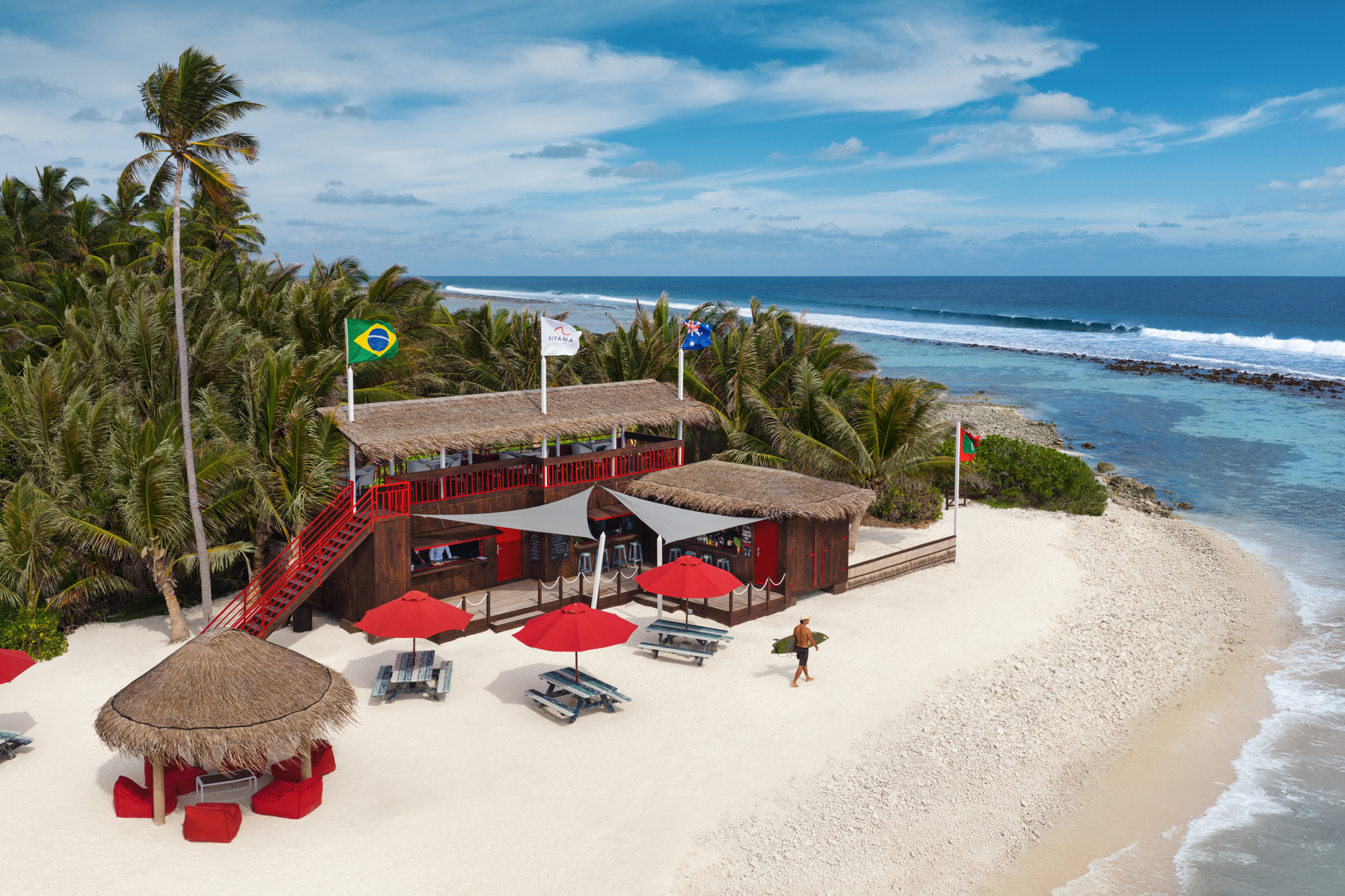
Niyama Private Islands Maldives now offers what is considered the most luxurious surf experience in the Maldives, enhanced by the introduction of its new Surf Shack — a stylish beachfront hangout serving gourmet bites, drinks, sunset views and lively parties.
Known as Nature’s Playground, the resort has long attracted surf professionals from around the globe. Located in the southern Maldives, where swells are at their strongest, it is a preferred base during peak surf season. Waves break directly on shore, with additional surf spots accessible within minutes by speedboat.
Niyama’s signature waves roll in at Vodi Point, situated on the westernmost tip of its twin islands. It is here that the resort has unveiled the new Surf Shack, designed to make time off the waves equally appealing. The thatched-roof venue encourages a barefoot, relaxed atmosphere, offering an upper deck for sunset viewing and picnic-style seating below. Reflecting Niyama’s sustainability ethos, Area Chief of Engineering Michael Patrick Slevin notes that 75 per cent of construction materials were repurposed, blending beach casual with environmentally conscious design.
Guests can enjoy gourmet dishes served from service windows, with a menu inspired by iconic surf destinations worldwide: Australian fish and chips, Indonesian satay, Mexican nachos and Japanese takoyaki. The drinks list pays tribute to rum, featuring an extensive collection and signature cocktails inspired by renowned surf breaks.
While the Surf Shack maintains a laidback feel during the day, the beachfront transforms at dusk as the tides shift and the DJ elevates the atmosphere. The resort’s rum and reggae Sundays have already become a celebrated weekly event.
Surfers at Niyama can design their days as they wish — chasing waves or relaxing ashore. The Surf Centre offers equipment and guidance, while Drift by Niyama provides recovery treatments to soothe muscles, repair sun-exposed skin and restore energy. Resident professional surfers remain available to advise on technique and wave conditions.
“The new Surf Shack forms part of the renewed Niyama experience, which includes significant refurbishments across the resort, inventive culinary additions and a greater emphasis on active living and wellness,” said Hafidh Al Busaidy, General Manager of Niyama Private Islands Maldives. “With more developments on the way, we look forward to sharing what comes next.”
Featured
Intimate island experiences shape Valentine’s Day at InterContinental Maldives Maamunagau Resort
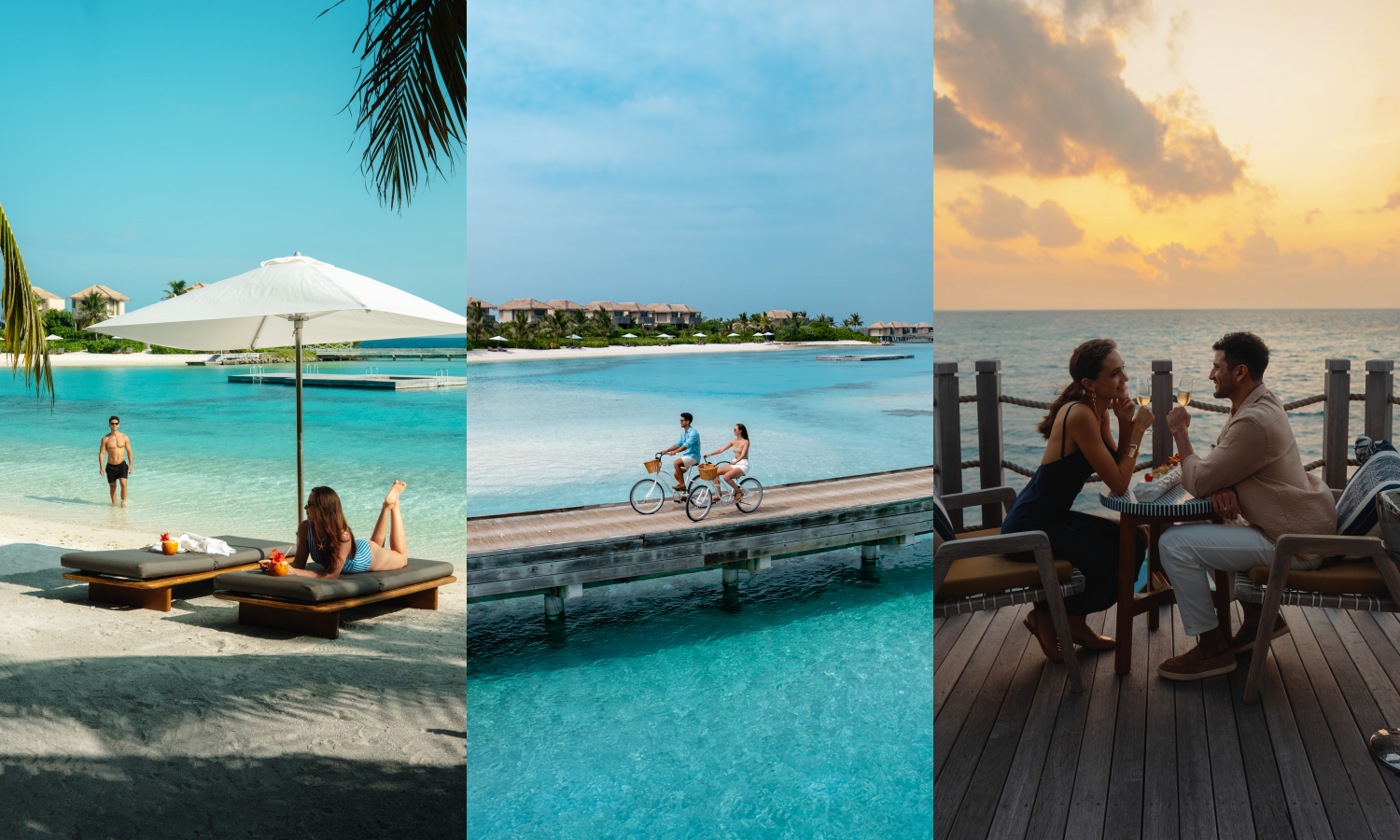
This Valentine’s Day, InterContinental Maldives Maamunagau Resort invites couples to celebrate love through a collection of carefully curated experiences designed to unfold in intimate moments across the island.
Framed by the natural beauty of Maamunagau Island, the resort’s Valentine’s programme centres on a series of limited-edition dining and wellness experiences created exclusively for the occasion. From private beachfront dining and moonlit dinners along Café Umi Beach to an elevated Valentine’s evening at the signature Lighthouse venue, romance is conveyed through setting, atmosphere and thoughtful detail rather than elaborate gestures.
Culinary experiences sit at the heart of the celebration, with bespoke Valentine’s menus intended to be savoured slowly, paired with curated wines and accompanied by uninterrupted ocean views. Each dining experience is crafted to feel personal, whether enjoyed beneath the night sky or in one of the island’s more private spaces.
Beyond dining, couples are encouraged to reconnect through shared wellness experiences at AVI Spa. Signature rituals and indulgent treatments offer a quieter expression of romance, giving guests the opportunity to unwind together in a calm, oceanfront environment. Those seeking complete privacy may opt for bespoke in-villa treatments, allowing the occasion to be marked within the comfort of their own surroundings.
Throughout Valentine’s Day, subtle touches across the resort—from crafted cocktails to curated wine moments—enhance the celebration without overwhelming it, reflecting InterContinental Maldives’ belief that genuine luxury is rooted in balance, intention and authenticity.
At InterContinental Maldives Maamunagau Resort, Valentine’s Day is shaped not by excess, but by considered, enduring moments that create shared memories long after the day has passed.
Awards
Holiday Inn Resort Kandooma secures prestigious Green Globe Certification
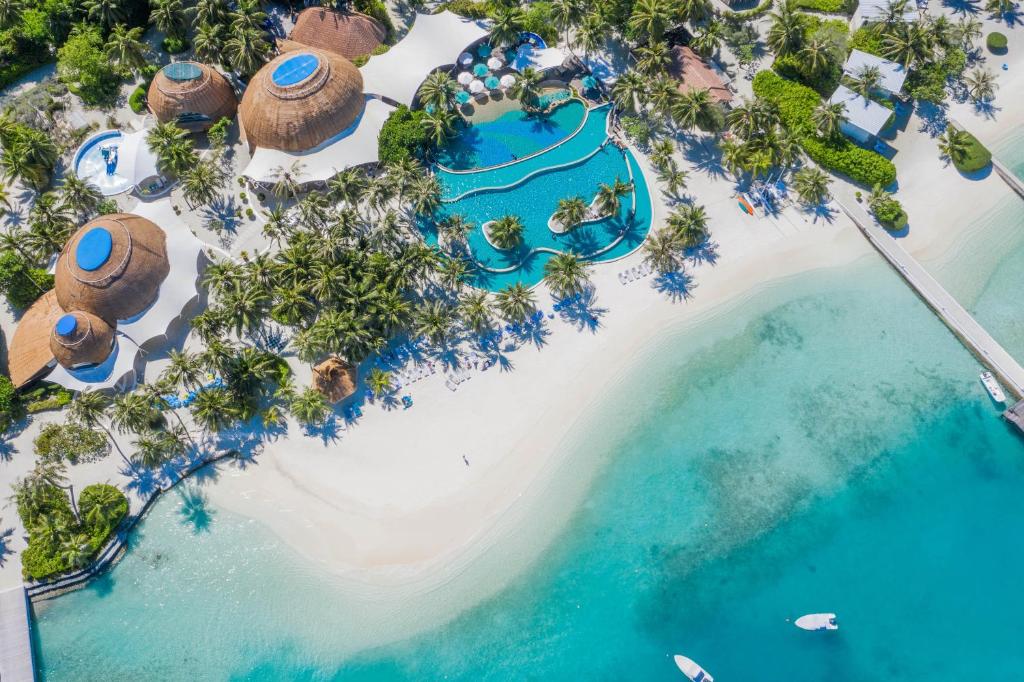
Holiday Inn Resort Kandooma Maldives has announced that it has successfully achieved Green Globe Certification, following an independent audit conducted after a focused six-month programme. Officially awarded on 23 December 2025, the resort attained an 86 per cent compliance score, marking an important step in its ongoing sustainability efforts.
Green Globe Certification is recognised as one of the world’s leading sustainability standards for the tourism sector. To be certified, organisations must demonstrate verified compliance with more than 40 criteria covering environmental stewardship, social responsibility, cultural heritage and sustainable management. The process prioritises transparency, measurable progress and continuous improvement, making the certification a notable accomplishment within the global hospitality industry.
General Manager Mark Eletr noted that the result reflects both strategic intent and collective commitment across the resort.
He stated: “We are very pleased with this achievement and with the steps taken to prioritise sustainability at Kandooma. That focus was evident from the outset through the expansion of two key roles within the team, ensuring sustainability leadership and accountability were firmly in place.”
As part of this approach, the resort introduced a combined Sustainability Officer and General Manager’s Executive Assistant role to lead operational implementation, supported by enhanced strategic guidance from the Director of Marketing, who recently completed tertiary studies with a strong sustainability focus.
Mark Eletr added: “An Executive Assistant role is traditionally heavily administrative. By streamlining my own processes and integrating AI tools to improve efficiency, we were able to redesign the role to place sustainability at its centre. Broadening our Director of Marketing’s remit has further strengthened strategic direction by adding genuine expertise and commitment. With both positions reporting directly to me, sustainability is clearly elevated across the resort, and the structure has proven highly effective.”
He also highlighted that the certification journey itself has been one of the most valuable outcomes.
“This was a whole-resort effort. It required commitment, collaboration and a shared vision for Kandooma’s long-term direction. We have now established strong policies, processes and measurement frameworks that will endure beyond the current leadership team, forming a key part of our annual planning cycle.”
The certification aligns closely with IHG Hotels & Resorts’ Journey to Tomorrow framework, the group’s global sustainability strategy centred on people, communities and the planet. It sets targets related to carbon reduction, water stewardship, waste management, responsible sourcing and community impact across IHG’s worldwide portfolio.
With an 86 per cent score against Green Globe’s criteria, Holiday Inn Resort Kandooma Maldives demonstrated strong performance in areas such as energy and water efficiency, waste reduction and recycling, marine ecosystem protection, responsible procurement, colleague wellbeing and community engagement. Initiatives including coral conservation, marine education, colleague sustainability training and newly introduced guest sustainability pledges highlight the resort’s integrated approach to responsible tourism.
Reflecting on the process, Mark Eletr said: “The past few months have been challenging, but the outcome has been worthwhile. This certification gives us a clear improvement plan and a roadmap for the future. We did not want a symbolic certification—we chose Green Globe because it is rigorous and evidence-based. Some said it would be too difficult, which is exactly why we pursued it. We wanted a standard that pushes us to improve, now and in the years ahead.”
Green Globe Certification provides an ongoing framework to support continuous improvement, ensuring the resort evolves its sustainability practices year after year. Holiday Inn Resort Kandooma Maldives remains committed to advancing responsible tourism, encouraging guests to make sustainable choices, and contributing positively to the protection of the Maldives’ natural and cultural heritage.
-
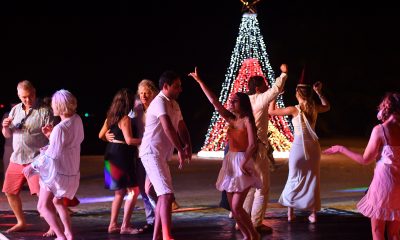
 News1 week ago
News1 week agoCinnamon Hotels & Resorts Maldives wraps Christmas celebrations, prepares NY 2026 line-up
-

 News1 week ago
News1 week agoHoliday Inn Resort Kandooma Maldives unveils week-long Orthodox Christmas celebrations
-

 News1 week ago
News1 week agoKuda Villingili Resort Maldives marks Year of the Horse with four-day Lunar New Year programme
-
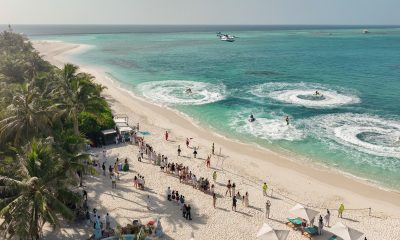
 News6 days ago
News6 days agoInterContinental Maldives Maamunagau rings in 2026 with ocean-inspired festive programme
-

 Drink6 days ago
Drink6 days agoHuvafen Maldives hosts exclusive Riedel Wine experience led by Maximilian J. Riedel
-
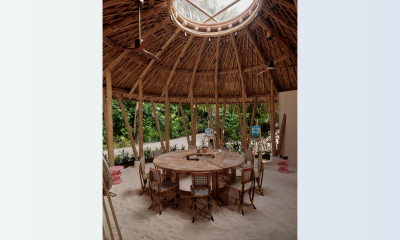
 News7 days ago
News7 days agoFinolhu unveils ‘A Year in Colour’ with global artist residencies in 2026
-
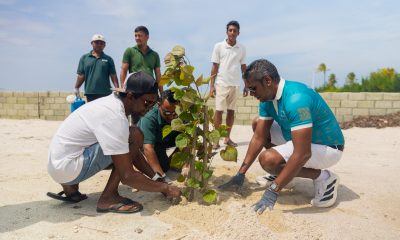
 News1 week ago
News1 week agoSun Siyam Olhuveli marks end of 2025 with sustainability-led programmes
-

 News1 week ago
News1 week agoSun Siyam Vilu Reef brings ‘Ocean Odyssey’ to life this festive season







